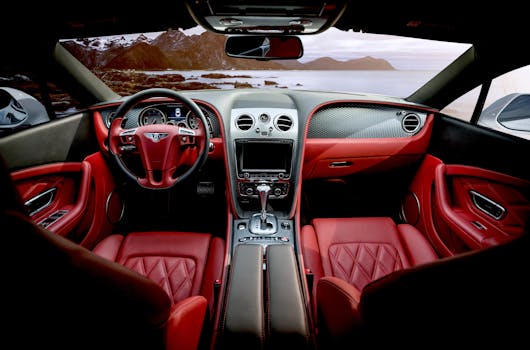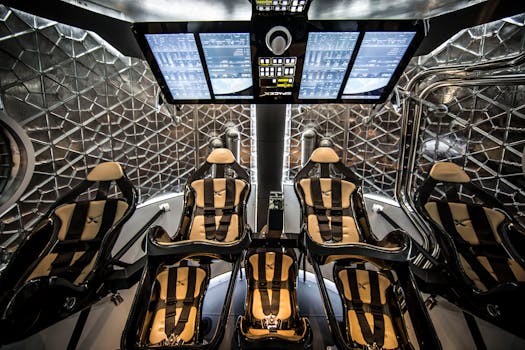The Future of Driving: A Deep Dive into the Exciting New Cars Coming in 2025
Takeaways: In 2025, the automotive industry is set to unveil a plethora of innovative vehicles that will redefine our driving experience. Key trends include the rise of electric vehicles (EVs), advancements in autonomous driving technology, and a strong emphasis on sustainability. This article covers the most anticipated cars, their features, and the implications for consumers and the environment.
Introduction to the Automotive Revolution

The Rise of Electric Vehicles
Electric vehicles are at the forefront of the automotive revolution. As governments worldwide push for greener solutions, manufacturers are investing heavily in EV technology. In 2025, we can expect a significant increase in the variety of electric cars available, catering to different market segments.
Innovative Battery Technologies
One of the critical factors affecting the adoption of electric vehicles is battery technology. In 2025, new advancements are expected to enhance battery efficiency, reduce charging times, and extend driving ranges. Innovations such as solid-state batteries and improved lithium-ion batteries will play a crucial role in the performance of electric cars.
Notable Electric Vehicles Coming in 2025
Several manufacturers are set to launch exciting new electric models in 2025. Brands like Tesla, Ford, Volkswagen, and General Motors are leading the charge with their innovative designs and technologies. These new models promise to deliver impressive performance and range, making electric driving more appealing than ever.
Autonomous Driving Technology

Levels of Autonomy
Autonomous vehicles are classified into different levels, ranging from Level 0 (no automation) to Level 5 (full automation). By 2025, we will likely witness the introduction of Level 3 and Level 4 vehicles, which can handle specific driving tasks without human intervention.
Safety and Regulatory Challenges
As the technology for autonomous vehicles advances, safety remains a paramount concern. Manufacturers must address potential risks and work with regulators to establish guidelines for the safe deployment of these vehicles on public roads.
Impact on Urban Mobility
The widespread adoption of autonomous vehicles could significantly alter urban mobility. With reduced traffic congestion and improved safety, cities may need to rethink their infrastructure to accommodate the changes brought about by this technology.
Sustainability and Eco-Friendly Practices

Recyclable Materials and Green Manufacturing
Manufacturers are increasingly adopting sustainable materials in vehicle production. This includes using recyclable plastics, bio-based materials, and reducing the carbon footprint of manufacturing processes. Such practices not only appeal to environmentally conscious consumers but also help companies meet regulatory requirements.
Alternative Fuel Technologies
While electric vehicles dominate the conversation around eco-friendly cars, alternative fuel technologies are also gaining traction. Hydrogen fuel cell vehicles and biofuel-powered cars are being developed to provide consumers with more sustainable options.
Government Incentives and Consumer Demand
Governments around the world are offering incentives to promote the adoption of eco-friendly vehicles. This includes tax breaks, rebates, and funding for research into sustainable automotive technologies. As consumer demand for greener vehicles rises, manufacturers are compelled to innovate and adapt.
Notable Car Models Anticipated in 2025

Tesla Model 2
The Tesla Model 2 is expected to be an affordable electric vehicle catering to a broader audience. With a focus on accessibility, this compact car may offer impressive range and performance, making electric driving more attainable.
Ford F-150 Lightning
The electrified version of Ford’s iconic F-150 truck is set to redefine the pickup segment. With its powerful electric motors and extensive range, the F-150 Lightning aims to combine utility with sustainability.
Volkswagen ID. Buzz
Reviving the classic Volkswagen Microbus, the ID. Buzz is an all-electric van designed for families and adventure seekers. With modern technology and a retro design, it promises to be a hit among consumers looking for a spacious and eco-friendly vehicle.
Consumer Trends and Preferences

Shift Towards Subscription Services
Car ownership is evolving, with many consumers exploring subscription models as an alternative to traditional ownership. This trend allows drivers to access a range of vehicles without the long-term commitment, appealing to younger generations.
Importance of Connectivity and Technology
Today’s consumers expect their vehicles to be equipped with the latest technology. Features such as advanced infotainment systems, connectivity options, and driver-assistance technologies are increasingly important in the decision-making process.
Focus on Personalization
As competition intensifies, manufacturers are focusing more on personalization to attract consumers. This includes customizable interiors, unique paint options, and tailored technology packages that meet individual preferences.
The Global Automotive Market Landscape

Emerging Markets and Their Impact
Emerging markets, particularly in Asia and Africa, are becoming increasingly important for car manufacturers. As these regions develop their economies, the demand for personal vehicles is expected to rise, leading manufacturers to adapt their strategies accordingly.
Competition Among Established Brands
As new players enter the automotive market, established brands face growing competition. Traditional manufacturers must innovate and stay relevant to maintain their market share while navigating the challenges posed by startups and tech companies entering the space.
The Role of Regulations in Shaping the Market
Regulatory frameworks play a significant role in shaping the automotive market. Stricter emissions regulations and safety standards are pushing manufacturers to invest in cleaner technologies and safer vehicles, ultimately benefiting consumers and the environment.
Technological Innovations Shaping 2025 Vehicles

Advanced Driver Assistance Systems (ADAS)
ADAS technologies are becoming standard in many new vehicles. Features such as adaptive cruise control, lane-keeping assist, and automatic emergency braking are designed to improve safety and driving comfort.
Vehicle-to-Everything (V2X) Communication
V2X communication enables vehicles to communicate with each other and surrounding infrastructure. This technology aims to improve traffic flow, reduce accidents, and enhance overall road safety by sharing critical information between vehicles.
Augmented Reality Displays
Augmented reality is making its way into the automotive sector, with manufacturers exploring its potential to enhance the driving experience. AR displays can provide drivers with real-time information about their surroundings, navigation directions, and vehicle performance.
Conclusion

Sources
- Autoweek – New Cars Coming in 2025
- MotorTrend – 2025 Electric Vehicles: What to Expect
- CNBC – The Future of Cars: What to Expect in 2025






